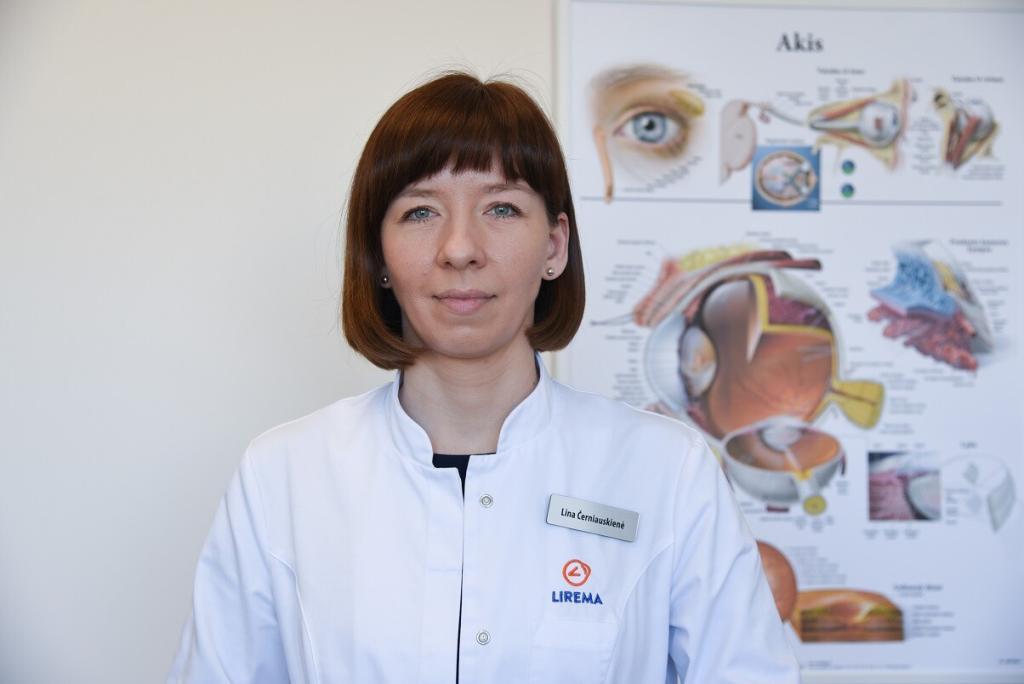As the spring sun shines brighter, many start looking for old or buying a new pair of sunglasses. Few people know what to pay attention to when choosing, what are the signs that it’s time to say goodbye to their old glasses, and what is the risk for those who forget sunglasses altogether?
UV rays are divided into UVC, UVB and UVA according to wavelength. The ozone layer absorbs up to 99 percent of UVC rays, but UVA and some UVB rays reach the earth’s surface anyway. Too much exposure to UVC can be harmful to our skin and eyes.
Age Does Not Matter
According to Lina Černiauskienė, an optometrist at the Lirema Eye Clinic, everyone should protect their eyes from harmful rays, regardless of age. Children are particularly vulnerable as the lens of their eye is highly transparent and transmits rays well into the retina.
“Eye protection should be taken seriously by people who spend a long time in direct sun and those with fair skin, bright eyes, or eye diseases. Eyes are affected by direct rays and by rays reflected from various surfaces. Baseball caps or wide brim hats will only protect from direct sunlight, so it is important to put on additional glasses,” says the specialist.
A common mistake is to think that you only need to protect your eyes on a sunny summer day. The rays penetrate the clouds and can be just as harmful.
“It is recommended to limit the time in direct sunlight from 10 am to 4 pm, when the exposure to rays is strongest. The reflection of the rays varies greatly from one surface to another. Snow reflects 80–90% of the surfaces, water up to 30%, dry sand more than 15%, so glasses should be worn at all times,” L. Černiauskienė advises.
High mountain travellers need to make sure that sunglasses cover the eyes well from all sides, have more superior UV protection and have a 4-lens darkness category. Rays reflected from the snow can cause temporary burns to the cornea – known as photokeratitis. The same is true when staying near the water for a long time.
How to Choose the Right Sunglasses
According to the optometrist, the glasses must provide reasonable protection against UV rays. It should also be comfortable, close to the eyes. You should choose sunglasses with larger lenses to better protect your eyes from the sun’s rays passing through the edges of the frame.
“According to the light transmittance, spectacle lenses are divided into 5 categories. Depending on the geographical area of Lithuania, category 2-3 dark glasses are quite sufficient. For those who drive or spend a lot of time near the water, it is recommended to choose glasses with polarising lenses. Such glasses improve the image’s contrast because the reflections formed from the horizontal surfaces when light is reflected are removed,” L. Černiauskienė advises. For athletes and active people, the manufacturers offer a choice of specialised glasses. These can also be activity-specific goggles with exclusive lens colours and coatings for ultra-comfortable and vivid vision.
“There are several options for people who need corrective glasses. One option is glasses with photochromic lenses that darken when reacted with UV rays. Corrective dark sunglasses are also produced. The usual glasses mentioned above are also suitable for those who wear contact lenses or decide to perform laser vision correction,” says the optometrist.
May Cause Harm
The primary function of sunglasses is to protect the eyes from harmful UV rays and glare. The pupil of the eye responds to ambient light and, depending on its intensity, contracts, thus regulating the flow of light into the deeper tissues of the eye, the retina.
“When looking through the dark glasses, the pupil widens. For this reason, wearing dark glasses without a protective UV filter will not only not protect you but will also severely damage your eye health. The protection also decreases if the spectacle lenses are damaged, and scratches occur – such glasses should be abandoned,” says L. Černiauskienė.
According to the specialist, when choosing sunglasses, it is vital to look for the CE marking, which is usually found on the inside temple of the glasses. Such spectacles should protect the eyes from 380 nm to 400 nm UV rays.
“Even inexpensive glasses can meet these requirements. The price of glasses is determined more by the uniqueness of the design, the quality of the glasses frame and lens materials, also their resistance to environmental influences. If, however, the safety of spectacles is in doubt, in many optics salons, it is possible to check them with a special device – a spectrometer,” advises L. Černiauskienė.
Without wearing proper sunglasses, exposure to UV rays can cause short-term eye damage such as photokeratitis (inflammation of the cornea) and photo conjunctivitis (inflammation of the conjunctiva). It also can cause non-malignant derivatives of the eye’s conjunctiva, such as the surfer’s eye (pinguecula and pterygium).
Gradual clouding of the lens of the eye – cataracts and age-related macular degeneration (AMD) – is also associated with the harmful effects of UV rays.
“Contact lenses or moisturising drops with UV protection can partially protect the eyes from such radiation, but the conjunctiva and the fragile skin around the eyes remain unprotected. Harmful rays can not only have a greater effect on skin pigmentation but also cause cancerous changes, so taking care of your eyes is extremely important,” concludes L. Černiauskienė.
